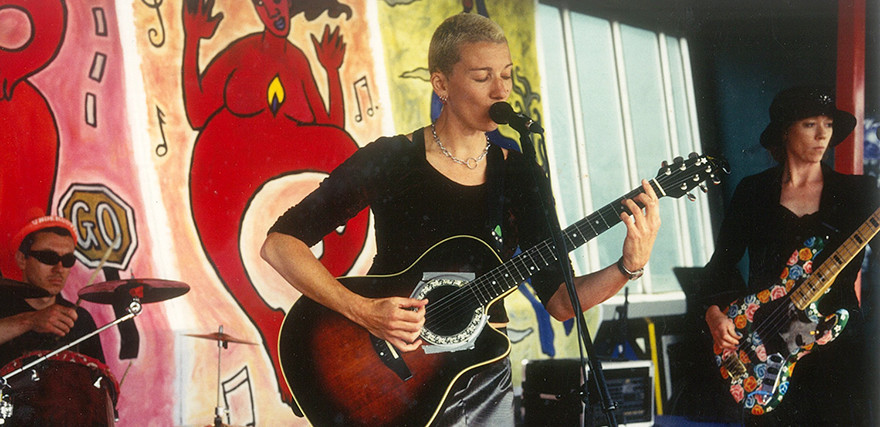
Kāren Hunter performing on the Karangahape Road overpass, Auckland, 1998, with Matthew Hunter (drums) and Jo Taylor (bass).
Karangahape Road’s role in popular music dates back to the first decade of the 1900s, when the side streets held two of the city’s most popular dance spots. Both were held in halls owned by fraternal organisations, who also used them for their meetings: the Masonic Hall on Upper Queen Street and the Druids’ Hall on North Street (now Galatos Street). It was the era of six o’clock closing, and dances were largely alcohol-free. Patrons danced with a partner and sat down for a small supper on their laps midway through.
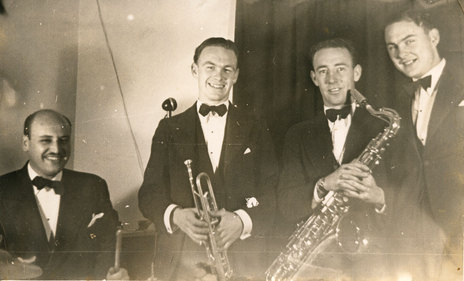
In the late 1930s visiting band Sammy Lee and his Americanadians impressed New Zealand musicians with the biggest swing sound they had yet encountered. Lee later became a nightclub owner in Sydney's notorious King's Cross scene. In this photo from early 1940 he is at the drum kit with, from left, Auckland musicians Jim Warren, Roy Lester and pianist John MacKenzie, at the Masonic Hall, Queen Street, Auckland. - Jim Warren collection

The Druids’ Hall on Galatos Street (formerly North Street), Auckland 1963, later to become the Galatos bar and venue. The photographer is thought to be Ernest Ian MacLaren. At right, Galatos in 2021, Auckland Libraries Heritage Collections 580-07664. Left: Matt Elliott, Auckland Libraries Heritage Collections 1385-1116.
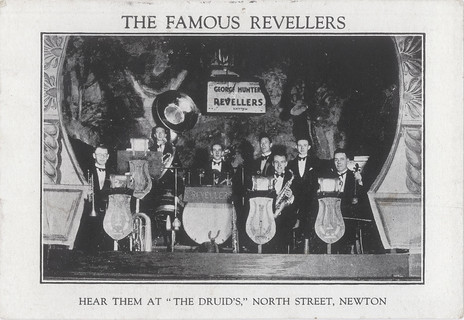
Kāren Hunter's grandfather George Hunter's band, The Famous Revellers: “Hear them at ‘The Druid’s,’ North Street [now Galatos Street], Newton.” George Hunter was a pianist. The Druid’s Hall is now the venue called Galatos. - Kāren Hunter Collection
K Road was a busy shopping area. Visitors would peruse items at George Courts department store, which was built in 1926 – or St Kevin’s Arcade, built in 1924 and providing access to Myer’s Park. There were a dozen cinemas in the area and during the silent film era many of them had their own musicians. The Prince Edward Theatre – originally named King’s Theatre – had its own orchestra. It has gone through several owners including Robert Kerridge, who renamed it the Playhouse Theatre, and in 1968 it was renamed the Mercury Theatre. Music has continued there in recent years although the venue is currently closed for earthquake strengthening and refurbishment. The current owners plan to reopen it in 2024.

Playhouse Theatre, Mercury Lane, Auckland, 1967. - Don McRae Collection, Auckland Libraries Heritage Collections 1673-01
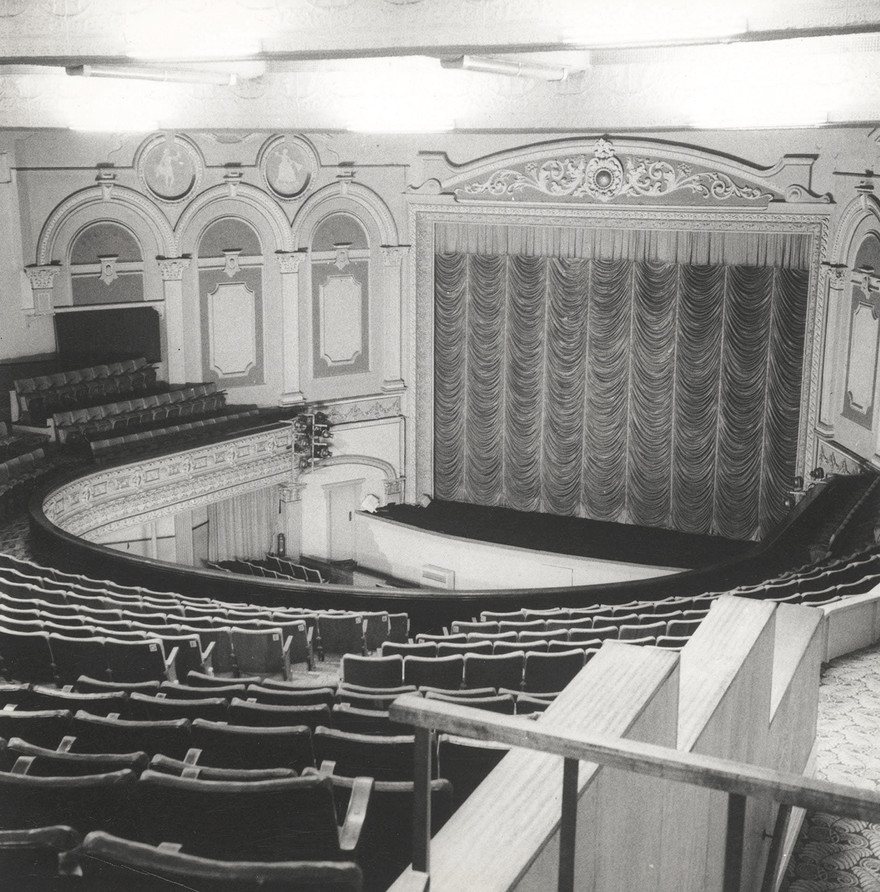
The dress circle and stage at the Playhouse Theatre, later known as Mercury Theatre, Mercury Lane, Auckland 1967. - Don McRae Collection, Auckland Libraries Heritage Collections 1673-15
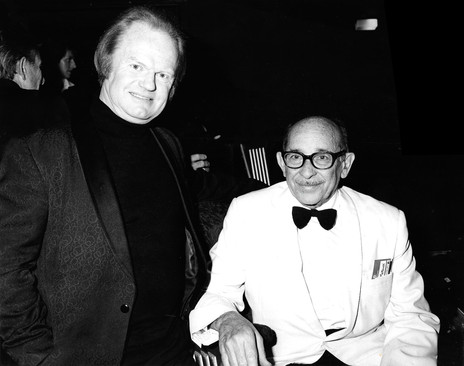
Neil McGough with his mentor, conductor Juan Matteucci, at the Mercury Theatre, Auckland, during its 1986 season of West Side Story. Matteucci had been the musical director at the Mercury.
The swing era saw the arrival of new clubs, such as the Carlton Cabaret, which opened in 1934 near Woolworth’s. Above what is now the Hemp Store on K Road, the Polynesian Club was opened by Tahitian immigrant Lou Mati in the early 1940s. Popular hits of the day were performed alongside “Island Music” with lap-steel guitar being one of the lead instruments. In the 1950s the Polynesian Club became a cool hangout where jazz musicians interested in the latest styles of music would come for a “blow”.
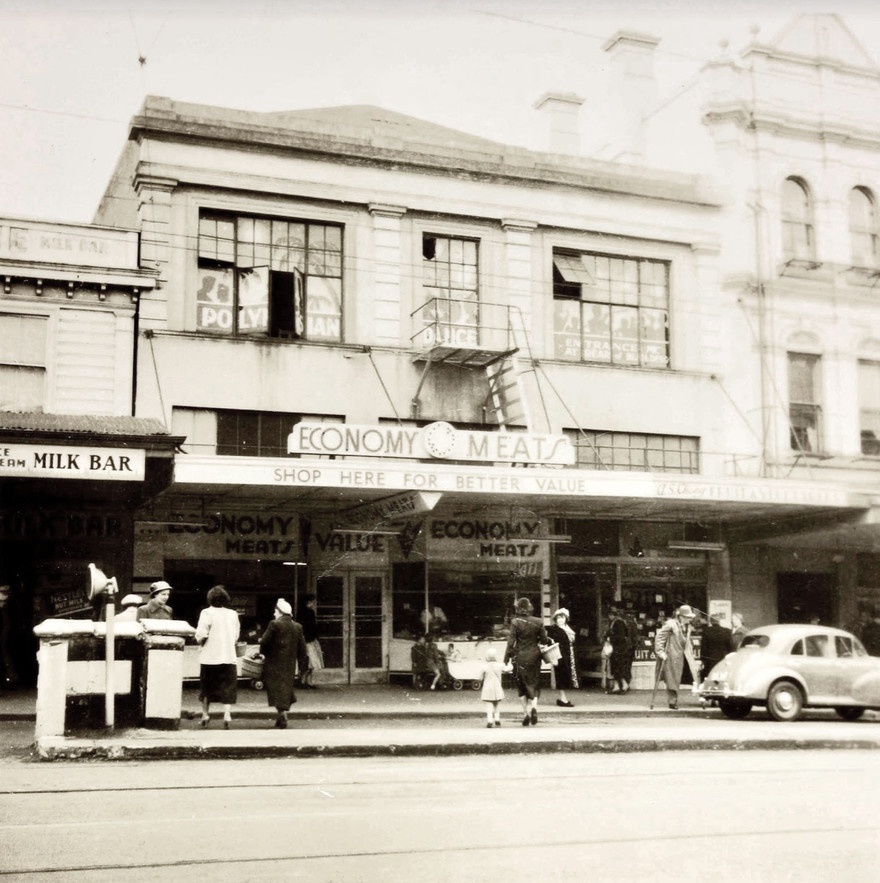
This photo of Karangahape Road in 1953 shows the windows of the Polynesian Club above street level, with signage reading: “Polynesian Dance. Entrance at the rear of the building.” - Archives New Zealand BABJ A680/1/3
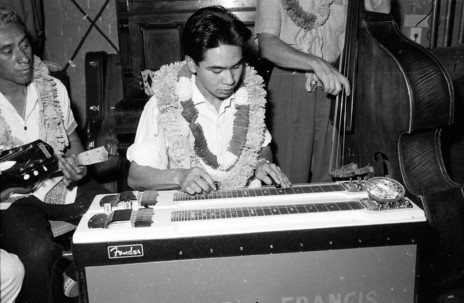
Mauri Chan at the Polynesian Club, 1961. Chan went on to release a run of singles on the Zodiac label. - Auckland Libraries 1269-E0146-05
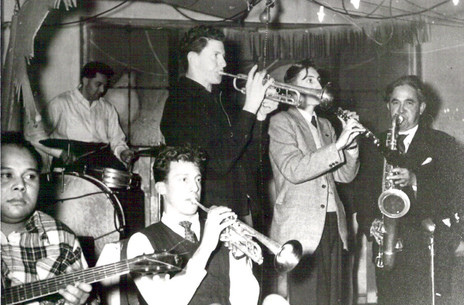
Lou Mati (far right on saxophone) at the Polynesian Club. Tony Ashby is the clarinettist, Merv Thomas standing beside him on trumpet. - Merv Thomas
Another new arrival was the introduction of “dine’n’dance” venues where patrons could eat the latest in cuisine (T-bone steak!) and listen to smooth lounge music. On K Road the home for this style of eating was the Hi Diddle Griddle, located at number 507 (“food from heaven”, the marketing slogan rhymes).
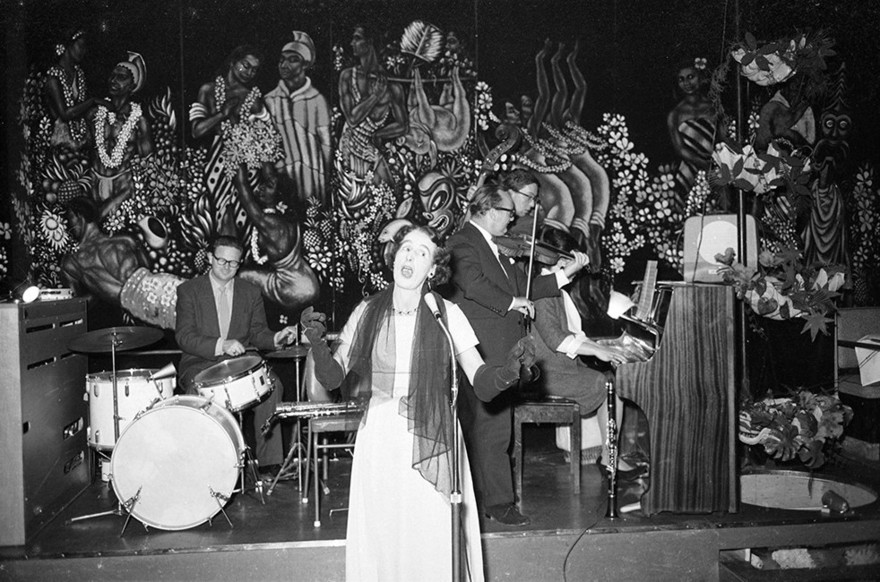
An unidentified singer performing at the Hi Diddle Griddle, 3 August 1960. The band is Neil Dunningham on drums, Paul Lestre on violin, Les Still on bass, and Nancy Harrie on piano. - Auckland Libraries, Rykenberg Collection, 1269-B734-27
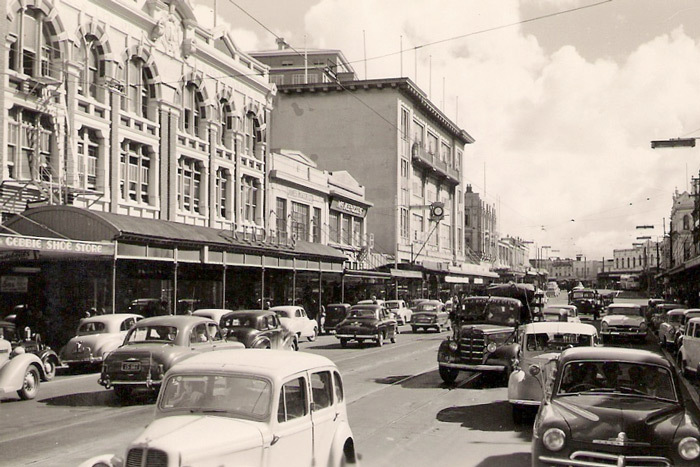
Karangahape Road in the late 1950s shows three department stores in a row, all with thriving record shops: Rendells, McKenzies and George Courts
By the 1960s, many of the cinemas on K Road had closed down so some were repurposed as venues. The Tivoli, which was between Liverpool Street and Symonds Street became “Surf City” and hosted rock’n’roll.
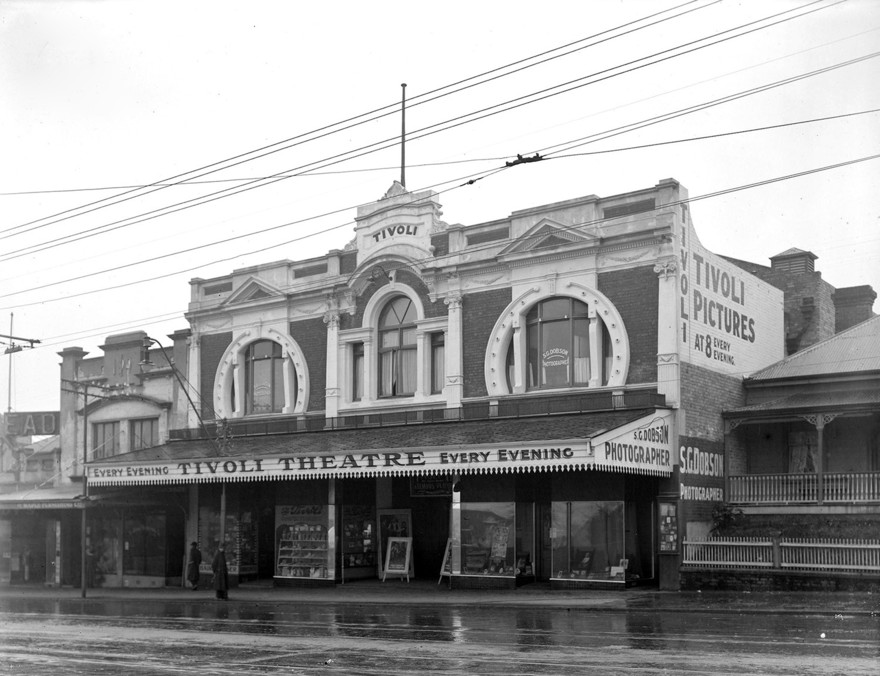
Tivoli Picture Theatre, Karangahape Road, 1917. It was at the Symonds Street end, opposite the cemetery. - Photo by Henry Winkelmann, Auckland Libraries Heritage Collections 1-W1606
However, the popularity of K Road diminished in the late 1960s due to the construction of the Central Motorway Junction, which turned the middle section into a construction site: 50,000 residents left the surrounding area after 15,000 houses were demolished.
Over the same period, K Road also became known for its strip clubs. The low rent had brought the country’s first dedicated club, Windmill Follies, in 1962. This was followed by one of the longest-lasting clubs, Las Vegas. The delineation between strip performances and the music scene wasn’t so clear in those days, and bands would sometimes play Las Vegas in the 1970s. Strip clubs often had drag acts who sang as part of their routine and K Road’s connection with drag continues to the current day, especially since it holds long-running drag venue Caluzzi, which opened in 1996.
The edgy reputation of K Road made it seem like the perfect spot for alternative musical acts. The upstairs bar at the Rising Sun Hotel was taken over by booker Simon Coffey and Alister Reid in June 1985; with Paul Rose taking over in April 1986. Rose promised variety, and his opening weekend featured a stilt theatre group, a solo Chris Knox, the electronic duo Selwyn Toogood, and the Headless Chickens. Many top independent and Flying Nun acts of the day played there. A notorious performance by Ministry of Compulsory Joy involved a dead sheep onstage.
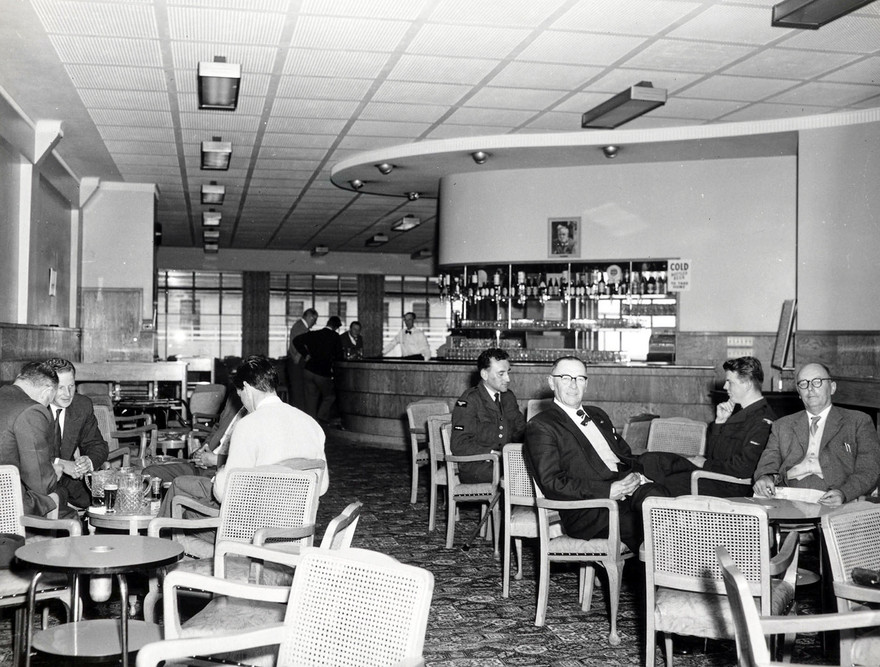
Waiting for the Headless Chickens to start, upstairs at the Rising Sun Hotel, K Road, Auckland, 1959. - Auckland Libraries Heritage Collections 895-A59703
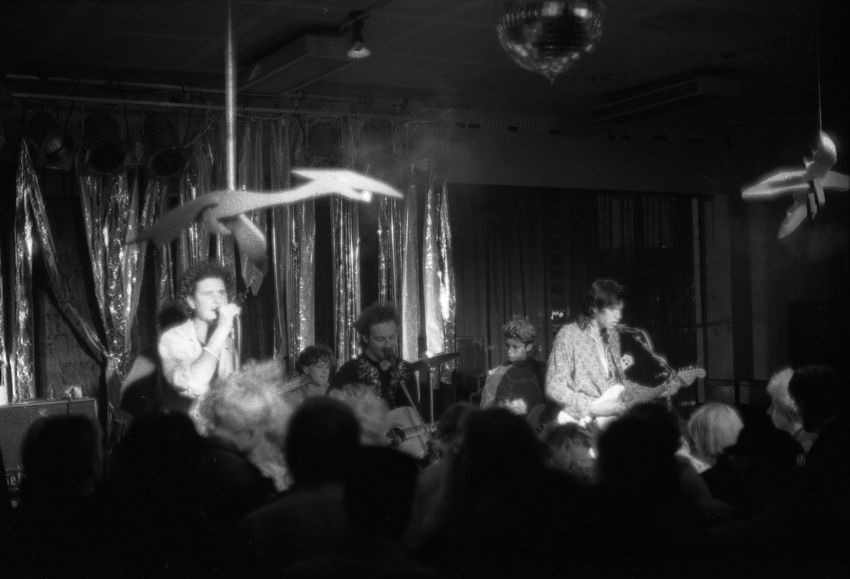
Bird Nest Roys, at the Rising Sun on Auckland's K Road in 1986 - Photo by Jonathan Ganley
Near the corner of Ponsonby Road was the Dog and Trumpet, a sports bar that hosted occasional gigs. Its most fruitful period was during 1991 when Stuart Broughton took over the functions room facing Newton Road and began running it from Thursday to Sunday as The Dog Club. Two of Auckland’s most popular bands of the era played there – Supergroove and Semi Lemon Kola – and Broughton went on to manage both. There were visits from The Renderers and Axel Grinders, as well as early shows by Hallelujah Picassos and The Mutton Birds. Noise issues brought the endeavour to an end after only six months.
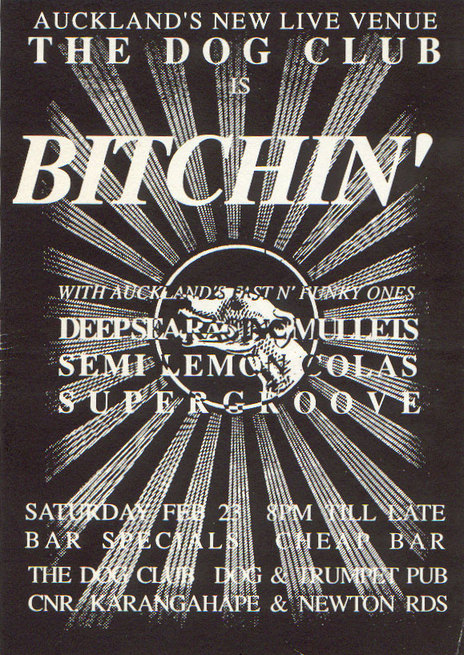
The flyer for the opening of Stuart Broughton's Dog Club in Newton Road in February 1991
In 1996, on Newton Road, the Dog’s Bollix opened in the space where Dog Club had been and survived as a venue for 20 years, hosting a huge range of music, from international acts to local indie favourites and traditional Irish music.
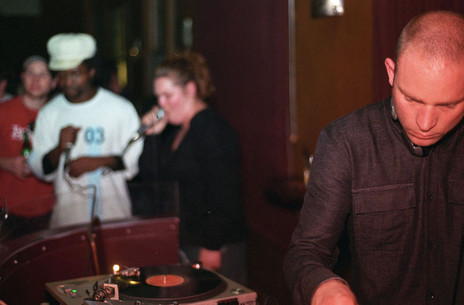
The Nomad DJing at Auckland's Khuja Lounge, April 2005.
In 1997, Gene Jouavel turned the corner room of his upstairs office space on the corner of Queen Street and K Road into a bar and venue called Khuja Lounge. Jouavel also worked alongside John Minty and Tony Johnson to re-open the old Druids’ Hall as a venue, which they called Galatos. Still there under different ownership, the venue has hosted local acts, industry gigs, and Big Day Out sideshows including Foo Fighters and The Mars Volta.
Throughout the 80s and 90s, a number of musicians practised and lived nearby, including the Headless Chickens.
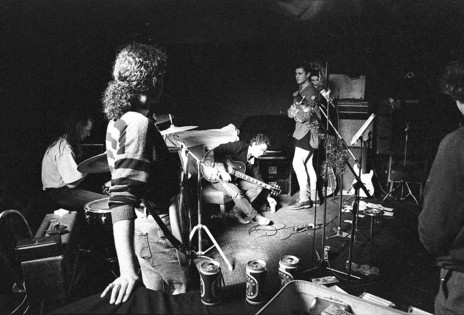
Headless Chickens in their practice room in Galatos Street. - Brian Murphy
Around the corner on West Terrace was the notorious “Red House” whose residents included members of Sperm Bank Five, ?Fog, and Celia Mancini from King Loser.
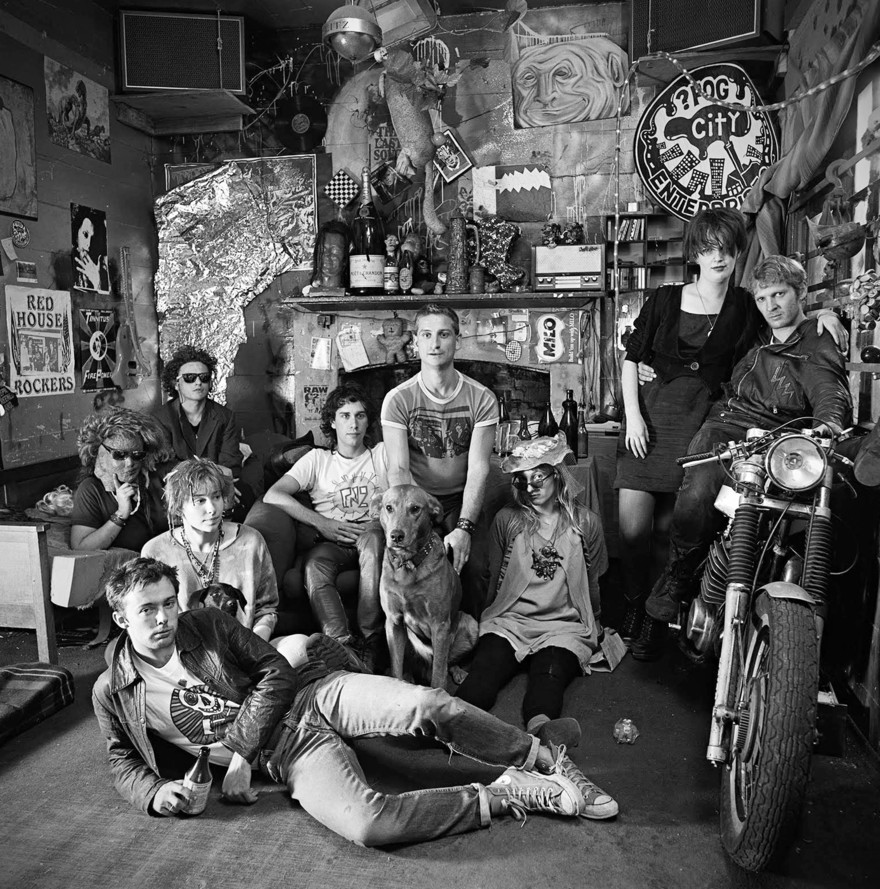
Red House residents, West Terrace, Newton; photo by Stuart Page, April 1990. - Auckland Libraries Heritage Collections 273-PAG068-02
In keeping with the trend of old cinemas becoming music theatres, the Vogue Theatre, which first opened in 1940, became a nightclub in the early 1990s. First it held DTMs (Don’t Tell Mama’s) and then became important to the LGBTQ community as the new location for Staircase/The Case after it moved up from Fort St/Albert St.
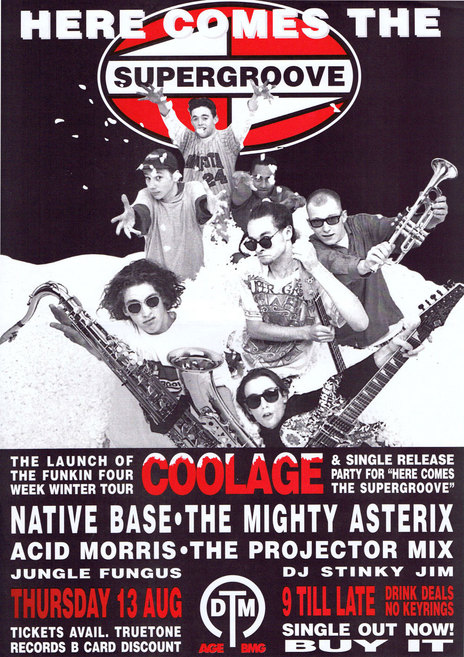
Supergroove's Here Comes The Supergroove show at DTM, K Road, in August 1992, with Projector Mix, Stinky Jim, The Mighty Asterix and more.
This also fed into K Road’s role as a home for the local dance music scene and a raft of new clubs opened through the 1990s into the 2010s, such as 420, Ink Bar, Coherent, and Feel.
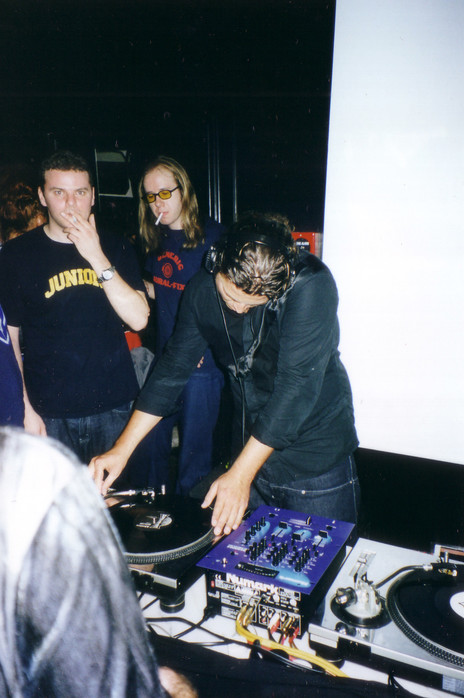
Mikey Havoc DJing with the Chemical Brothers, Feel, January 2000. - Allan Roberts
One of the most influential clubs was Calibre in St Kevins Arcade, a home for drum’n’bass and then more general dance music.
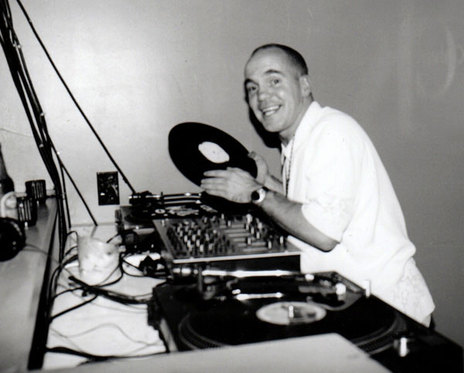
Benny Staples at Calibre, April 1999 - Photo by Claire Price
During the golden years of local hip hop in the early 2000s, the magazines Back2basics and Disrupt The System had their offices on K Road, and the Rising Sun became a home for the scene. In 2008, the old Staircase/DTMs location became the Studio venue where both top local acts and international visitors often perform, including many hip hop acts.
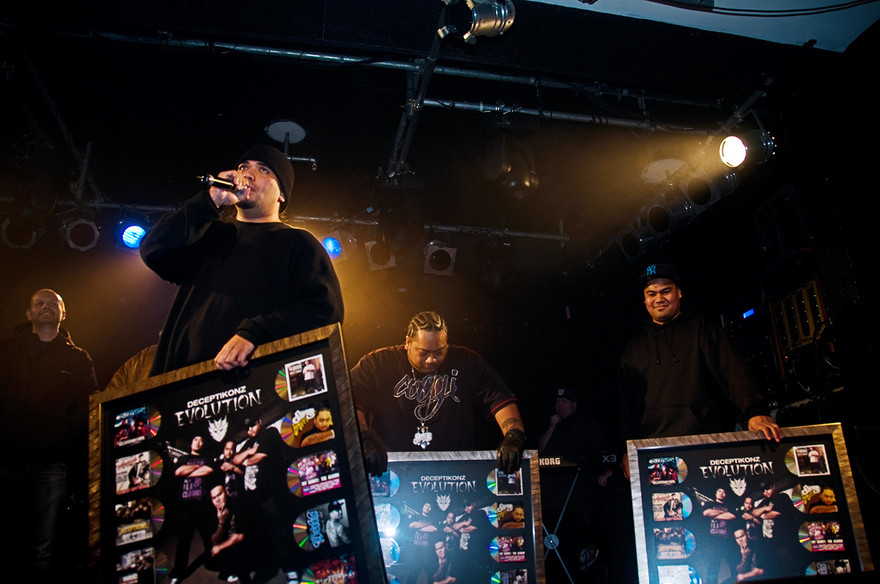
Mareko, Savage, and Devolo at Studio, K Road, for the Evolution - Past, Present Future album launch, 2010. - Rip It Up Archives
By the 2000s, K Road had a wide range of associations with the local music scene. There are instrument stores such as the long-running Rockshop and specialty seller Cadenza Guitars. Matthew Crawley and Jo Galvin booked under-used spaces such as Paradise and Eden’s Bar for their “Kiss and Make-Up” club nights/gigs, which is where Cut Off Your Hands and Lawrence Arabia played their early shows.
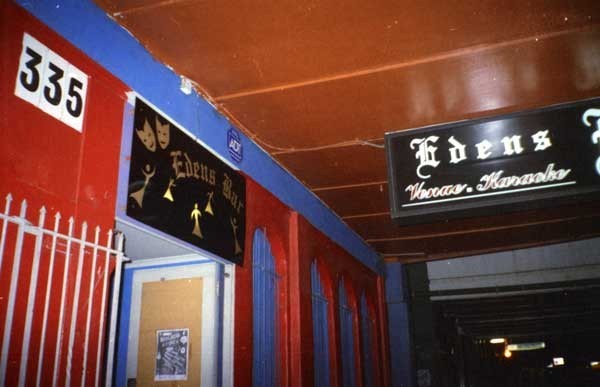
Eden's Bar, 335 Karangahape Road - Jo Galvin collection
The music store Flying Out opened on the top of Pitt Street, with regular instore performances and its own music festival, Others Way, which took place in bars in the area – the Thirsty Dog on the corner of Howe Street, at Galatos – and one year the Las Vegas Strip Club was used.
In the basement of the former Rising Sun, music photographers, ex-pat Kiwi Maryanne Bilham and her American husband Robert Knight opened the Anthology Lounge, while slightly down the road (where Eden’s Bar had been) legendary pianist Billie Farnell played some of the last gigs of his 60-year career in the venue he co-owned, Shanghai Lil’s.
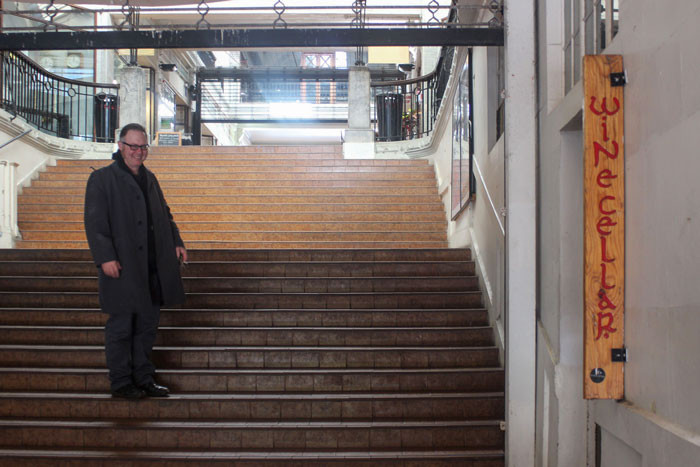
Rohan Evans outside the Wine Cellar, St Kevins Arcade. - Photo by Gareth Shute
Rohan Evans first opened the Wine Cellar in St Kevins Arcade as an outlet for his family’s winery, Purangi Estate, and soon began hosting gigs – first in the tiny main bar, then in the backroom of Calibre. When the final owners of Calibre were locked out by the landlord, Evans took over the space as Whammy Bar before passing it on to Tom Anderson and Lucy Macrae five years later.
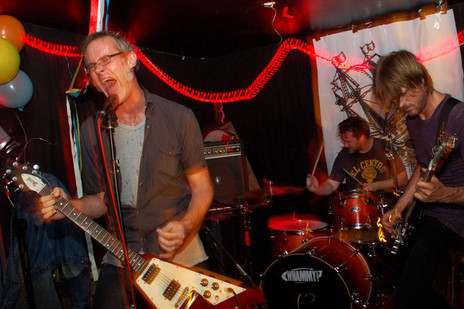
Bloody Souls playing at Whammy Bar, 2011 - Photo by Petra Jane Smith
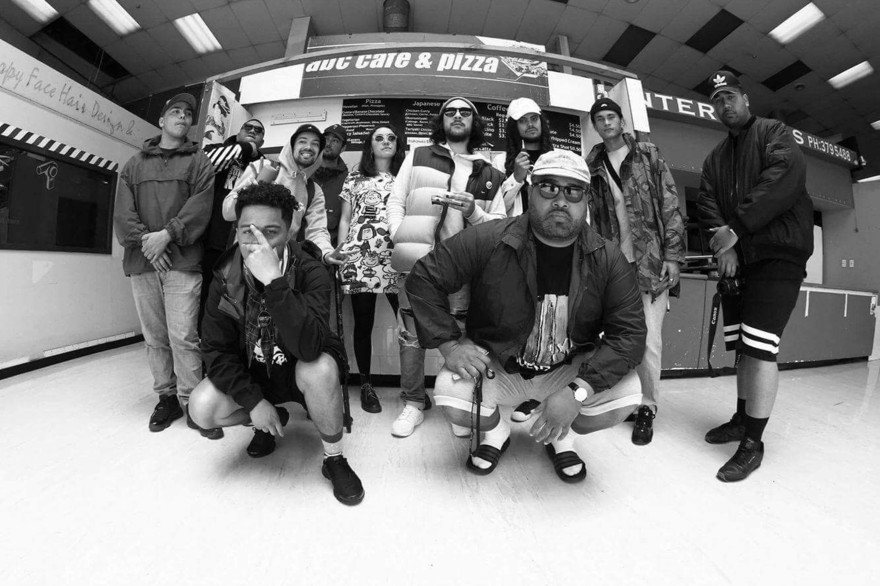
The Cool Like That video shoot at Mercury Plaza, K Road, with Diggy Dupé, Rizvan, Melo, DJ Spell, and an entourage. - Dan Nathan Walker, 2016
Also near St Kevins Arcade, the Bizdojo crew took over another old nightclub as a co-working space. Events at the spot were so popular that in 2015 it was converted into a venue in its own right as Neck of the Woods. This was run by Jonah Merchant from Bizdojo working alongside Josh Moore, a former general manager from Rakinos café in High Street. Merchant had been inspired by the dance events he had attended at Calibre, and welcomed other genres such as hip hop, indie music and pop, which is how the venue came to host the first show by now internationally successful act, Benee.
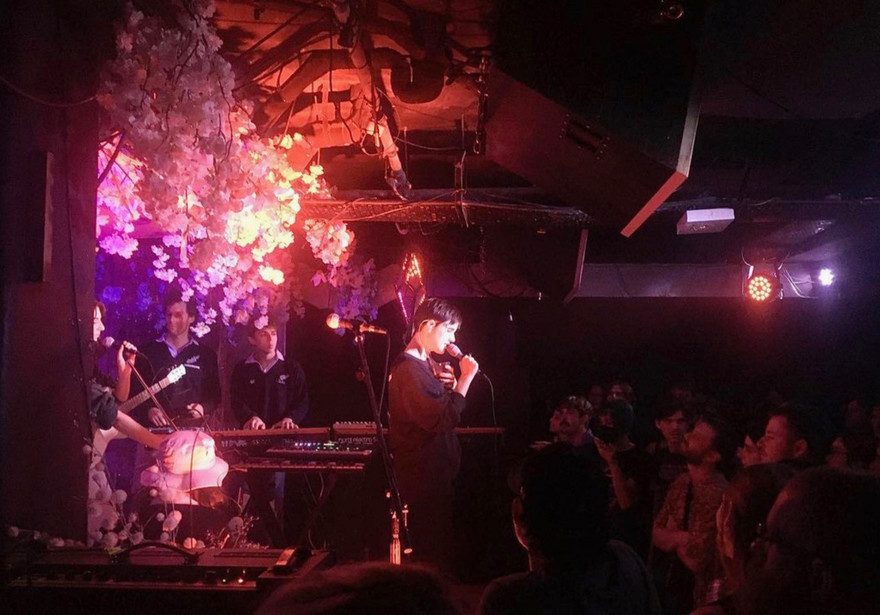
Princess Chelsea at Neck of the Woods, Auckland. - Gareth Shute
The importance of Karangahape Road to the local music scene has taken on a new aspect with a set of internationally focused companies setting up shop – Kiwi-owned Serato and Melodics are based here, while international company InMusic (whose subsidiary brands include Numark, Denon and Akai) have an office of developers nearby. So while K Road has quite a musical past, it also has a bright musical future too.
--